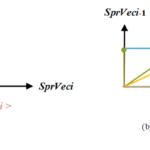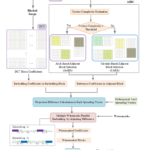 Macao Polytechnic University’s Research Findings on Digital Watermarking Technology Published in Top International Academic Journal
Macao Polytechnic University’s Research Findings on Digital Watermarking Technology Published in Top International Academic Journal
Associate Professor Yuan Xiaochen of the Faculty of Applied Sciences of Macao Polytechnic University and her research team has published a high-level academic paper related to multiple watermarking technology, “Parallel Multiple Watermarking Using Adaptive Inter-Block Correlation”, in the top international academic journal "Expert Systems with Applications". This journal is a top international academic journal in the fields of computer science and artificial intelligence. It is a “double Q1” journal; that is, it belongs to both SCIE Q1 and is also a first zone journal in the computer science category of the SCI division of the Chinese Academy of Sciences. It is an A-level journal recognized by the Chinese Association for Artificial Intelligence and is ranked 5th among artificial intelligence journals in the H-index on Google Scholar.
With the development of the Internet and electronic devices, digital images are becoming more accessible to the public, and there have been more cases of unauthorized use of other people’s images for commercial purposes. In order to create a healthy and safe internet environment, the copyright protection of digital images has received increasing attention. Digital watermarking is a reliable copyright identification method that embeds copyright information into digital images to form a digital watermark. If necessary, special technology can be used to extract watermarks from images for copyright identification.
Based on adaptive inter-block correlation, this study proposes a technology that uses the correlation between image blocks to expand the capacity of the image to embed Parallel Multiple Watermarks (PMW). Considering the texture characteristics of the image, the team designed a texture complexity algorithm and adaptively used two different adjacent block selection algorithms according to the different texture complexity of the image: Circular-shaped Adjacent Block Selection (CABS) and the Arch-shaped Adjacent Block Selection (AABS) to select the most appropriate adjacent block; and embedding multiple watermarks alternately into different frequency bands in the Discrete Cosine Transform (DCT) domain of the image block to make it have good imperceptibility and high robustness. The team theoretically analyzed the rationality of parallel orthogonal embedding of multiple watermarks, and verified the efficiency of parallelism through experiments simulating various attacks. The test dataset contains cover images with different texture complexities, and various attacks were simulated in experiments. Experimental results in terms of imperceptibility, robustness, time cost and watermark capacity show that the multiple watermarking technology solution proposed in this study has satisfactory performance and is conducive to building a healthy and secure internet environment, and is a significant contribution to making Macao a livable smart city.



